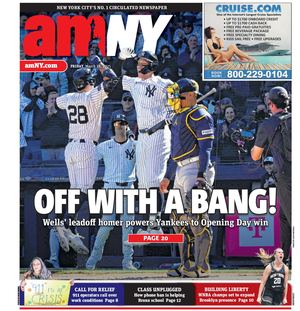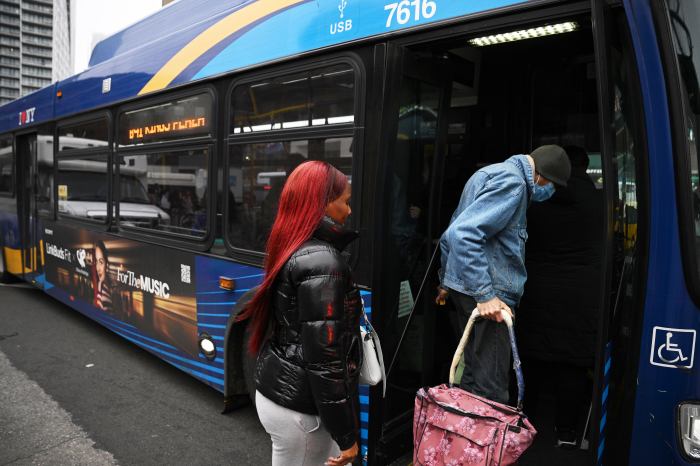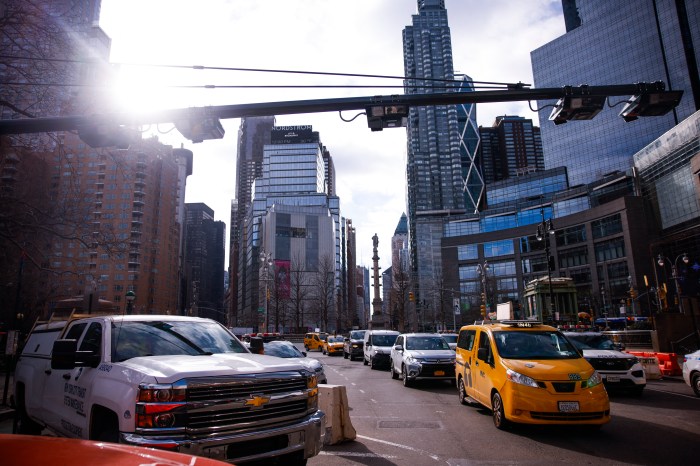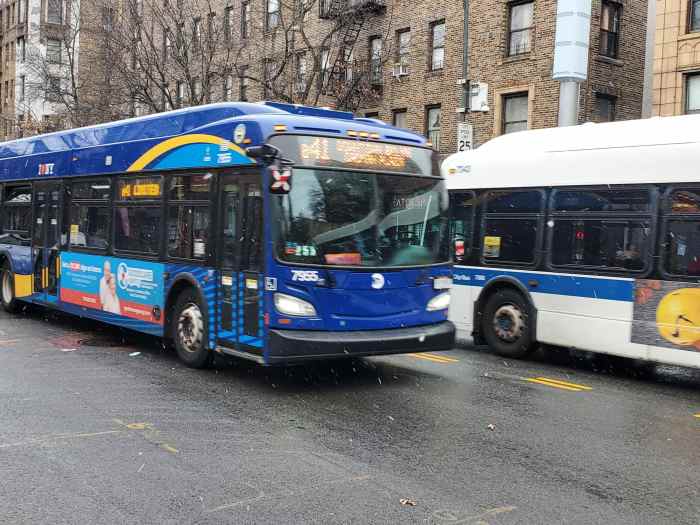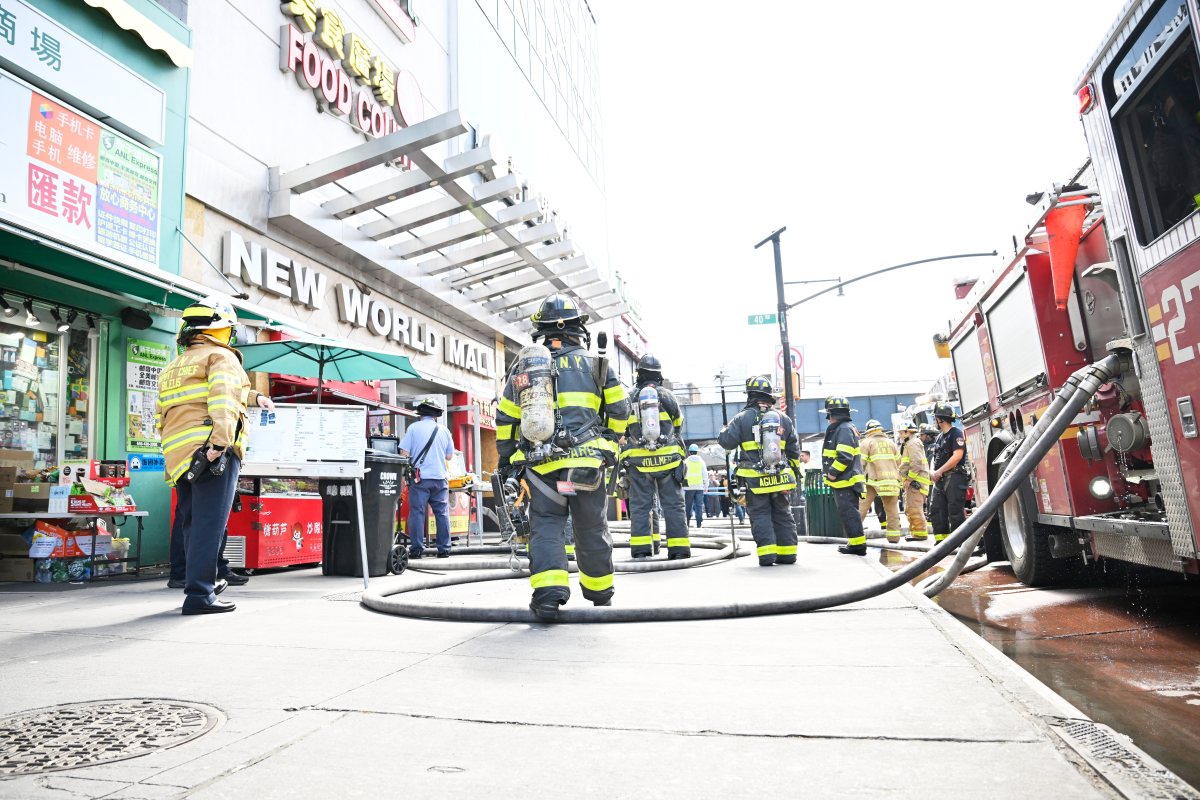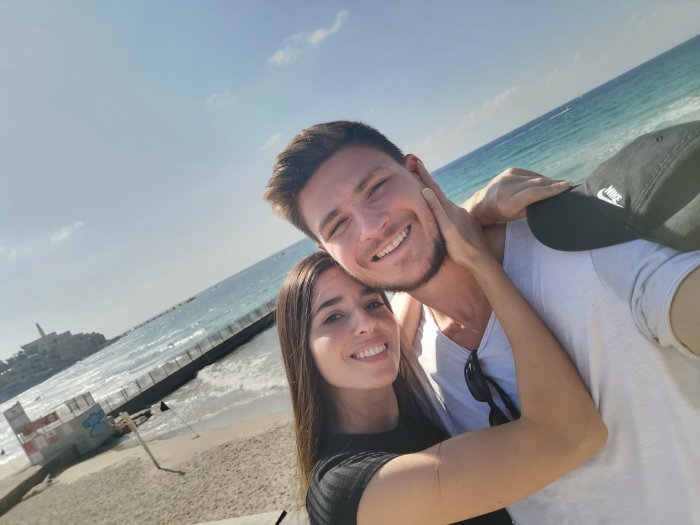Technology that gives buses more green lights has proven to decrease travel times, according to a new city report.
The report, published Monday by the city’s Department of Transportation, highlights that MTA bus speeds have improved by an average of 18 percent along four routes where they have had priority to move through intersections since 2012. It lays the foundation for a planned expansion of the practice through 2020.
“The time savings are real and significant,” said Polly Trottenberg, the commissioner of the city’s DOT. “That 18 percent has a real impact on peoples’ lives and can hopefully help us address what we’re concerned about — that the subways are very crowded … while we’re seeing a decline in bus ridership.”
Providing “priority” for buses at intersections involves the installation of what’s known as Traffic Signal Priority, or TSP, at traffic lights and on buses themselves. The technology allows for buses to communicate with traffic lights, which then can hold green lights or shorten red lights to more quickly move buses through an intersection.
Buses spend about 21 percent of their time stopped at traffic lights along what the DOT describes as “busy” city routes, according to the agency’s report. As of now, only five bus routes utilize TSP, with the technology installed on about 226 buses and at 230 intersections, according to MTA and DOT data. The two agencies plan on bringing the technology to another 11 routes and 550 intersections by 2020.
That expansion banks on a $9.9 million procurement to be presented to the MTA’s Transit Committee on Monday. The procurement, if approved, would allow for the accelerated installation of TSP software on the remainder of the agency’s bus fleet, which totals about 5,800 buses.
The report confirms previous findings from the DOT. Advocates have called for a faster rollout of TSP since it was first tested on Staten Island’s Victory Boulevard back in 2006.
Despite the initial success, the MTA and the DOT have fallen behind a goal from the Bloomberg administration, which called for the installation of the technology on 11 routes by 2013.
Trottenberg, also an MTA board member, said a complicated planning process as well as the lack of technology on MTA buses, limited the rollout of TSP in the city.
“For us it has been a fairly labor-intensive process to do the traffic engineering in very congested corridors and intersections. We need to make sure we have the timing right to prioritize bus movements without having a profound impact on pedestrian safety and other traffic movements,” said Trottenberg, who favors a strategic rather than blanket rollout of the technology.
Jon Orcutt, spokesman for TransitCenter, said the agency is nowhere near the number of routes it should be planning.
“We’re glad the DOT is talking about this and looks like they might finally buy the software to make it work … but two or three routes per year is not enough,” Orcutt said.
